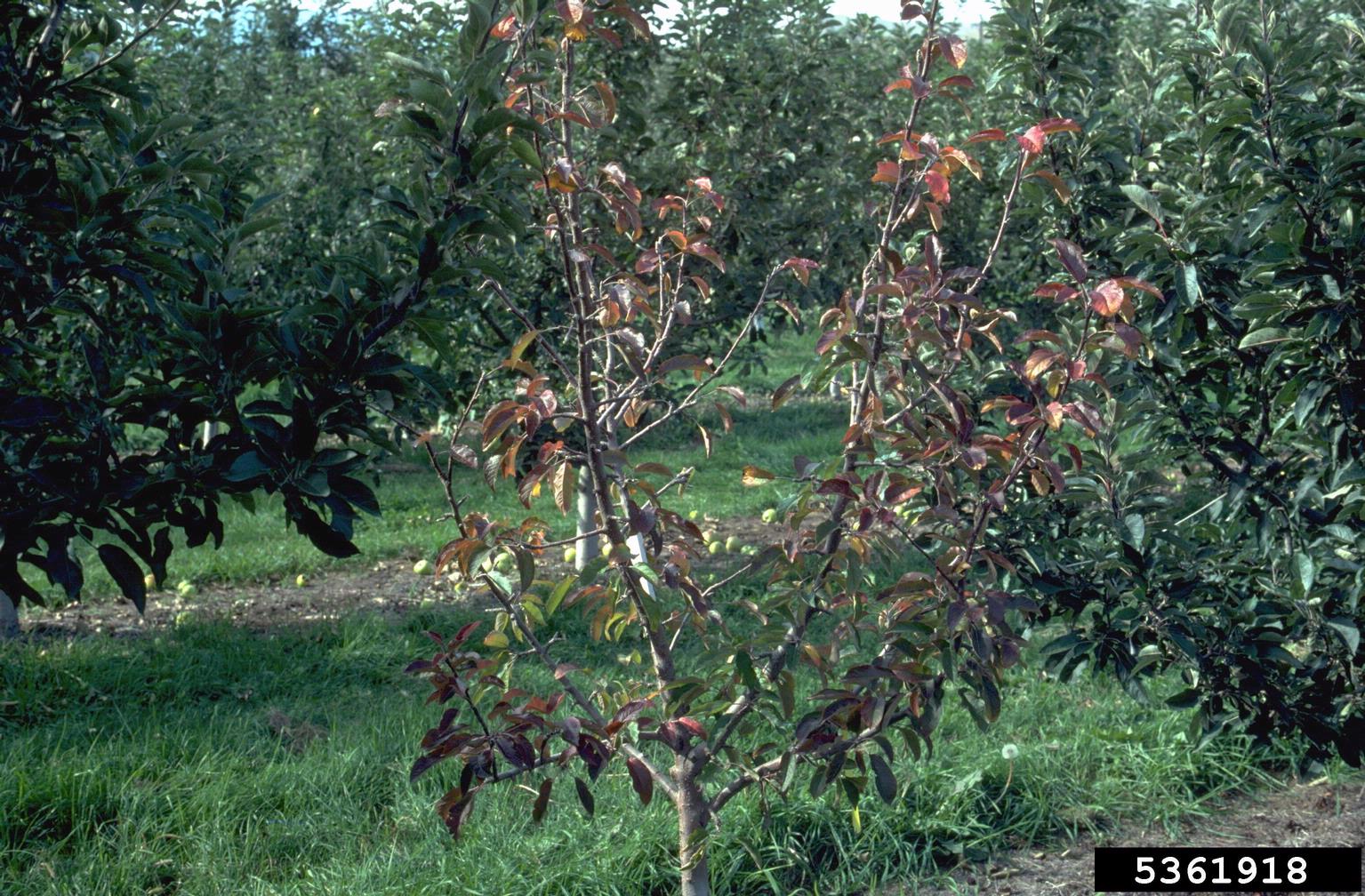Apple Collar Rot Life Cycle: Tips For Treating Collar Rot In Fruit Trees


One of the more dangerous diseases of apple trees is collar rot. Collar rot of apple trees is responsible for the death of many of our favorite fruit trees across the nation. What is collar rot? Keep reading to learn more.
What is Collar Rot?
Collar rot is a fungal disease that begins at the tree union. Over time, the fungus will girdle the trunk, which prevents important nutrients and water from moving into the vascular system of the plant. The causal agent is a water mold named Phytophthora. Treating collar rot starts with creating a well-drained planting site and watching young trees carefully for any signs of disease. It seems there are endless diseases that can infest our plants. A careful steward knows to watch for any signs of withering, loss of vigor, low production and physical signs of distress. This is how you will recognize collar rot in its initial stages, when there is time to save the tree. The collar rot life cycle can sustain for many years even in winter soil. It is a difficult adversary due to the fungus’ adaptability but with good management, newly infected trees can often be brought back to health. Collar rot is only one of the many ways that Phytophthora can affect apple trees. It may also cause crown or root rot. The disease can also affect other fruit trees, including nut trees, but is most prevalent on apples. Trees are often most noticeably affected when they begin to bear, usually three to five years after planting. The disease is most prevalent in the low areas of orchards with poorly drained soils. Collar rot of apple trees may also affect trees infected at the nursery. Certain rootstocks are more susceptible. The collar rot life cycle requires high moisture and cool temperatures. The pathogen may survive in soil for many years or overwinter in infected trees.
Identification of Collar Rot
Reddish leaves in late summer may be the first identification of collar rot. Trees may then develop poor twig growth, small fruit and smaller, discolored leaves. In time, cankers at the base of the trunk appear, with reddish brown interior bark. This will materialize at the scion, just above the rootstock where the graft union takes place. The canker is water logged and forms a callus as the disease progresses. The upper roots may also be affected. Other diseases and insects, such as borers, can also cause girdling too, so it is important for correct identification of collar rot to ensure successful treatment of the disease.
Tips on Treating Collar Rot
There are preventative steps to take when establishing an orchard. Amend soils so they drain well and choose a rootstock that is resistant to the fungus. In already established areas, you can scrape soil away from the base of the tree and gently scrape the surface of the infected area. Leave it open to dry. Fungicide is the most common method recommended to combat the disease. Make sure you use a product that is labeled for use on apple trees and stone fruit. Most are spray treatments. All instructions and precautions listed by the manufacturer should be followed. In larger orchards, it may be wise to contact a professional to spray the trees. If collar rot has developed into crown rot or the disease is in the roots, there is little help even a fungicide can provide. These trees are probably goners and should be replaced with a more resistant rootstock.
Gardening tips, videos, info and more delivered right to your inbox!
Sign up for the Gardening Know How newsletter today and receive a free copy of our e-book "How to Grow Delicious Tomatoes".

Bonnie Grant is a professional landscaper with a Certification in Urban Gardening. She has been gardening and writing for 15 years. A former professional chef, she has a passion for edible landscaping.
-
 Types Of Tomatoes Explained: Explore The Many Wonderful Shapes, Colors, Flavors, & Best Uses
Types Of Tomatoes Explained: Explore The Many Wonderful Shapes, Colors, Flavors, & Best UsesThe world of tomato varieties is vast and fascinating. Learn about the key types to grow in your garden, tailored to your preferences and space.
By Amy Grant
-
 Try The Trend – Turn Any Bed Into A Keyhole Garden With This Clever In-Ground Composter
Try The Trend – Turn Any Bed Into A Keyhole Garden With This Clever In-Ground ComposterKeyhole gardening is an efficient and sustainable practice that saves space. Get started on this DIY project quickly and easily with an in-ground composter.
By Bonnie L. Grant